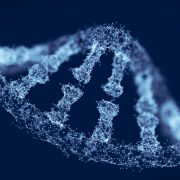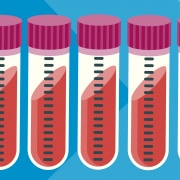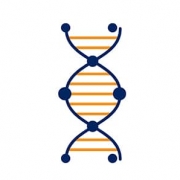Epilepsy and the genome
We know that epilepsy can have a genetic cause, but there is still much to discover. We explore findings from two new studies to learn more
New research presented at European Society of Human Genetics (ESHG) 2021 has highlighted the potential for genomic approaches to help diagnose epilepsy.
Two studies – one Danish and one Finnish – focused on different areas where breakthroughs could be made: identifying the genetic cause of the condition in children and using genome-wide association studies respectively.
About epilepsy
Epilepsy is a relatively common condition, affecting around 1% of people, but it can be extremely variable, both in its causation and the range and severity of symptoms.
The condition can be the result of a brain injury or trauma – for example, after a stroke, head injury or oxygen deprivation at birth. It can also have a genetic component: around a third of affected people have a family member with the condition.
Epilepsy that presents in children has a higher chance of having a genetic cause, especially in very young children or where there is a family history.
Study one: Monogenic cause in children
A Danish study used genomic testing on 290 children diagnosed with epilepsy or affected by serious seizures to try to find a genetic explanation for their condition. Results were extremely positive: a genetic cause was found in half of the patients.
Although the sample was small, 100 different variants were identified across 36 genes. As well as variants in expected genes, three genes not previously associated with epilepsy were discovered using whole exome sequencing, leading to new diagnoses for several children.
In addition to diagnosis, studies like these also have implications for treatment as conventional methods can be problematic for patients with specific gene variants.
Many monogenic epilepsies (involving variants in single genes) are caused by changes in ion channels – proteins that are essential for transmitting signals along nerve cells. Most drugs used to treat epilepsy block these channels, but some patients have gene variants that mean their ion channels have lowered activity. In these cases, blocking them can be ineffective or even harmful.
For around half of the children in the study, identifying the genetic cause allowed clinicians to then tailor the child’s treatment.
Study two: Polygenic scores for diagnosis
Another study presented at the same conference showed how polygenic risk scores could help diagnose epilepsy.
Epilepsy can easily be confused with other conditions, such as migraines and panic attacks. Some cases may be misdiagnosed initially, or sometimes diagnosis cannot be confirmed after the first seizure.
Researchers wanted to see if polygenic risk scores could be used to help make a diagnosis for patients presenting after a single seizure.
Dr Henrike Heyne and her team were able to use detailed Finnish electronic health records linked to genomic records to find people who had been affected by seizures and see whether they were subsequently diagnosed with epilepsy.
“In FinnGen, we could also investigate the health records of participants who had suffered convulsions where the cause was unclear. Although some of them had later received a specific diagnosis of epilepsy, the majority had not. And we found that the genetic risk for epilepsy was significantly higher in individuals who received a specific epilepsy diagnosis than in those with only one seizure where the case was unclear,” she said.
As a result, she and her colleagues suggest that polygenic scores could serve as a biomarker for epilepsy, alongside existing methods, to speed up diagnosis.
The researchers found that the influence of genetic factors, and therefore the predictive value of the polygenic score, was greater in people under 40 years of age than in older populations.
To date, over 500 genes have been identified that are associated with epilepsy. As these two studies show, breakthroughs are still possible – and through varied approaches, from small samples of individuals through to the analysis of population data.
Visit the ESHG website to explore the full conference programme from this year’s event
Want to learn more about how genomic testing can help diagnose conditions? Check out our new resource for clinicians
–









